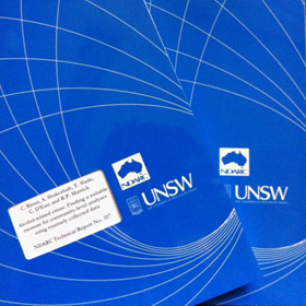NDARC Technical Report No. 123 (2001)
Executive summary
Introduction: The aim of this report is to increase understanding of the role of police in the prevention and management of alcohol-related problems. It is a brief overview of the range of strategies that the NSW Police Service employs in order to help prevent and manage alcohol-related problems, particularly crime and public disorder, and not a comprehensive audit or review. The need for the report is based on the high prevalence of these problems, the significant range of strategies that the NSW Police Service implements to address these problems, and the lack of documented recognition that the Police Service receives for implementing these strategies.
Method: Information for this report was obtained by a review of research literature and other documents, a search of relevant websites, and interviews with police key informants and others with knowledge of the report topic.
A: The environment
Research environment: Models and strategies for policing:
The literature relating to crime prevention, health promotion, and policing strategies was reviewed. It was noted that policing is no longer just reactive and reliant upon deterrent approaches. Crime prevention and health promotion strategies are increasingly being used, policing is more intelligence-driven, collaborative, and proactive.
Local environment: Police policies and structures:
National and state directions and objectives for police were reviewed. It was noted that there was increased emphasis on collaboration, professionalism, public relations, intelligence-led policing, and on the community’s sense of safety. Some relevant NSW police structures, units and positions were described. It was noted that (1) an increased variety of police positions with a proactive role has added to the police capacity to work in a proactive manner; and (2) various specialist units and positions relating to liquor licensing provide expertise in this area.
B: Issues and responses
The role of police in four alcohol-related problem areas was investigated: licensed premises, drink driving, public drinking and intoxication, and under-age drinking. For each issue, the nature of the problem, relevant legislation and other infrastructure relating to the problem, and police responses are described. A brief description of police involvement in alcohol education is presented, as this strategy relates to the four alcohol problem areas investigated.
Finally, a selection of case studies is presented. These case studies demonstrate a range of solutions to local problems and demonstrate the variety of collaborative work being undertaken with a range of partners. It is noted that few such projects have been documented, evaluated and disseminated and those chosen are provided to demonstrate the variety of strategies rather than an attempt to document all the strategies and projects being implemented.
Discussion: Although it is not well documented, the NSW Police Service has a range of strategies in place to address alcohol-related problems. Some operate on a statewide basis; others are locally based. These strategies are implemented by a variety of police positions, some of which are devoted solely to addressing alcohol-related problems (eg Licensing Officers) while others cover a broader range of issues (eg Youth Liaison Officers). Police use both reactive and proactive strategies and often work collaboratively with other agencies. They are involved in enforcement of the law for major and organised crime as well as what may seem minor breaches of the law.
Barriers to best practice, identified by the study, include issues relating to training, keeping up to date with current issues, shift work, competing priorities, community expectations, and the reactive nature of policing. With limited resources, priority often needs to be given to reacting to problems such as assaults rather than implementing strategies to prevent them.
Opportunities for better practice include a newly formed Licensing Council, a preference by police for the prevention of problems before they arise, existing successes in proactive policing, new policing directions, and community support for initiatives directed towards problem drinkers and trouble spots. It is concluded that it is likely that police are doing more in the area of alcohol-problem prevention and management than many outside (and inside) the NSW Police Service might realise, and that there appears to have been an increase in intelligence-driven, collaborative, proactive strategies. There appears to be potential for a continued shift from reactive to proactive strategies. This requires workforce development such as policies that promote police involvement in alcohol harm reduction, training of new and existing police in the relevant legislation, health promotion / crime prevention methods, keeping police up to date with legislative changes and new id eas for preventing and managing alcohol problems in their specific Local Area Commands, and support for innovation.
Recommendations: As a result of the investigations for this report, some recommendations are made. They are provided in full in the body of the report and summarised below.
- Recording of existing practice through an audit of police activity in the prevention and management of alcohol problems is required.
- From this audit and from the research literature and other evidence, good practice should be identified and disseminated.
- There should be further development and implementation of a workforce development program.
- There is a need for some demonstration projects with rigorous evaluation and dissemination of findings.
- Further research could be conducted into the role of police in the prevention and management of alcohol problems among particular cultural groups.
- Increased collaboration with other agencies offers opportunities to increase effectiveness and efficiency.


